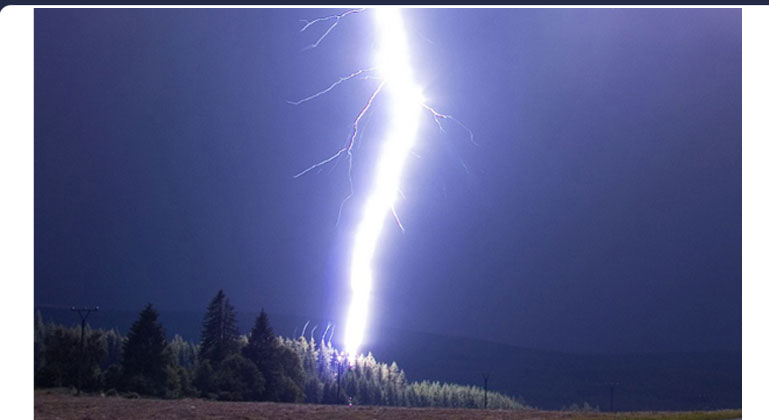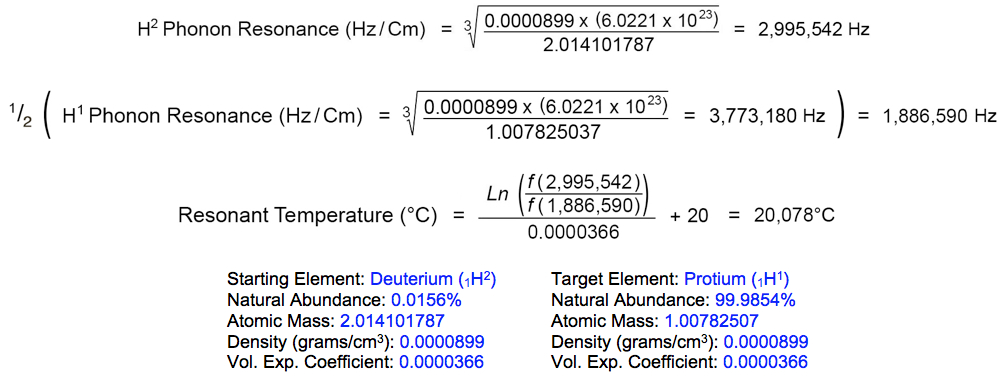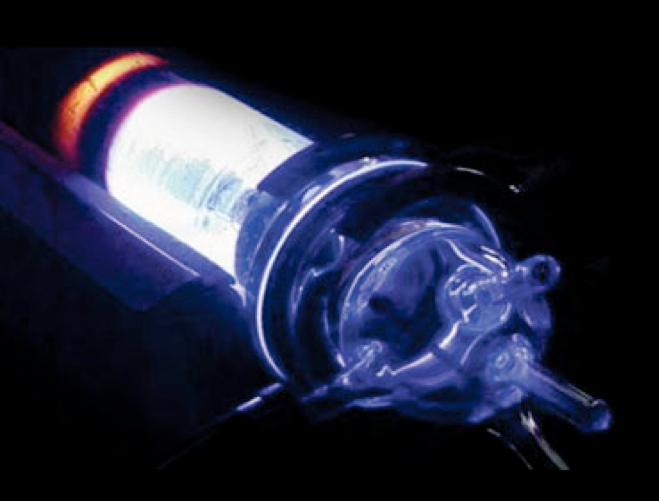




Resonant Transmutation of Deuterium in Lightning
The Lightwater Reactor: Deuterium to Protium Transmutation
by Alex Putney for Human-Resonance.org
August 23, 2014
The resonant atomic transmutation of deuterium into protium is achieved by precision control of atomic resonance in a two-stage reaction that is safe, non-toxic and involves high energies. Deuterium is instilled with the resonant atomic frequency signature of protium in its 1/2 hydrino state, before being rapidly cooled to trigger bulk reversion into protium --according to the established frequency 'memory' of the standing wave field of each atom.

The first stage of the transmutation reaction superheats the starting isotope (deuterium) to the phonon resonance frequency of the target isotope (protium) during high-voltage electrical discharges like lightning strikes (above).
Protium, the primary stable isotope of hydrogen, provides the resonant target frequency at 1/2 hydrino state, as determined by the following formulae (calculated using the latest atomic data sets, provided in blue):

The resonant frequency of protium (H1) at 1/2 hydrino state is 1,886,590 Hz, according to the element's atomic diameter at 20°C. Deuterium heavy isotope (H2) resonates at this same frequency when heated to 20,078°C:


Deuterium to Protium
The high energy transmutation of deuterium into protium is hypothesized here, based on recent observations of 5,000/m3/s neutron flux from lightning strokes (Gurevich et al., 2012), with intense electron avalanches dissociating atmospheric water vapor and H2 into protium, deuterium and oxygen atoms above 20,078°C forming HHO plasma.
* Deuterium is heated >20,078°C, ejecting neutrons and reverting to protium during hydrino implosion:

As defined by Dr. R. Mills of Blacklight Power, the high-energy implosion of hydrogen atoms induces the formation of hydrinos, generating intense emission of infrared and ultraviolet-A light as the single electron jumps to 1/2 , 1/3 , 1/4 , 1/5 and 1/6 of the nominal distance to the nucleus (the position previously considered as hydrogen's ground state) (Mills et al., 2002). These newly recognized high-energy hydrino states constitute a major breakthrough expanding our physical understanding of atmospheric processes involving lightning and its natural cleansing of heavy isotopes from the skies by resonant atomic transmutation cascades of deuterium into protium.
Resonant atomic fission of electrically dissociated deuterium atoms to form protium atoms during the hydrino implosion reaction cascade emits neutrons according to the following basic nuclear recombination formula:

From the book Phonon Resonance Dataset
Return to The 'Cold Fusion' Reactor
Copyright 2013-2015 Alexander Putney